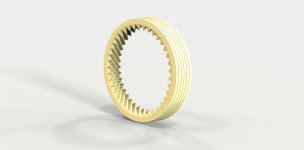New renderings...
There is no way that I would have even suspected that the first pic wasn't a photograph!
Hi Vela.New renderings...What do you think? Still haven't done anything about them.

Those speakers do really look awesome!
Can you please tell me the function of the spiral construction behind the bass speaker? Is that something that you've already tried?
I can't imagine that you haven't thought about how to produce such an enclosure and what kind of material to use?
I think it would be cool if you could design the suspension in such a way as to mke them height-adjustable with the ability to point the speakers up or down.
Would look great on the desk you designed. ;-)
Thank you for taking the time to take a look

These will be floor standing speakers, the bass should be about 8"~20cm so putting them on a table is not an option.
There is a way to tilt them up or down just by adjusting the length of the steel cords at the front and back. That could be done with hollow screws. Those are not shown on the renders.
The construction behind the speaker is a spiral horn, it was invented as a sound enhancement device by Mr. Masaaki Takenaka. It works the same as a normal folded horn, but it takes up less space and it doesn't dictate a certain box design. I believe it should produce better results just because of it's organic shape. I haven't heard it yet unfortunately as I've been trying to reach Mr. Takenaka for the last 10 years...
I have thought about construction, naturally, these are playing in my head for 10 years already!
Attachments
There are reasons that these sorts of designs are not used for large studio monitors. (baffle size/driver size/SPL)
Also there have been quite a few speakers made with egg shaped exteriors.
Suspending them with wire is aesthetically interesting, and would look good in room with "modern" decor.
The idea of a spiral expansion behind the driver looks to my eye more like a short folded transmission line than any sort of actual "horn". The shape makes it less likely to carry higher frequencies compared to the straight line of equivalent length.
It's very pretty and exotic looking, but given the difficulty of construction and the cost/time involved (you could CNC the parts I guess), I'm wondering if there is some true acoustical benefit to be had at all?
You could try this sort of arrangment in a more crude way and see how it sounds works. That would be a standard box with a rear folded (multiple folds) transmission line of the same length.
Then after you decide if it has benefit, promise, or works well, either go ahead or else move on to another idea...?
_-_-
Also there have been quite a few speakers made with egg shaped exteriors.
Suspending them with wire is aesthetically interesting, and would look good in room with "modern" decor.
The idea of a spiral expansion behind the driver looks to my eye more like a short folded transmission line than any sort of actual "horn". The shape makes it less likely to carry higher frequencies compared to the straight line of equivalent length.
It's very pretty and exotic looking, but given the difficulty of construction and the cost/time involved (you could CNC the parts I guess), I'm wondering if there is some true acoustical benefit to be had at all?
You could try this sort of arrangment in a more crude way and see how it sounds works. That would be a standard box with a rear folded (multiple folds) transmission line of the same length.
Then after you decide if it has benefit, promise, or works well, either go ahead or else move on to another idea...?
_-_-
I trust there are huge advantages in having no flat surfaces in/on the cabinet, and having the speaker suspended also.
But, yes, the construction is complex and expensive, and I haven't even mentioned the construction of the stands, and those have to be made of steel to keep the whole thing stable and tight. So that explains why I still haven't done anything about this. I hope the BR version could be made of some kind of composite material and that might keep the price and the time of construction down. The monitor version would have wall mounts that would be much easier to make and set up. And since most studio monitors are mounted high and pointing down, that would be ideal.
But, yes, the construction is complex and expensive, and I haven't even mentioned the construction of the stands, and those have to be made of steel to keep the whole thing stable and tight. So that explains why I still haven't done anything about this. I hope the BR version could be made of some kind of composite material and that might keep the price and the time of construction down. The monitor version would have wall mounts that would be much easier to make and set up. And since most studio monitors are mounted high and pointing down, that would be ideal.
No, this is not the case at all.
The lack of baffle size effects the frequency response dramatically.
The suspension having movement even of a fraction of a mm could negatively effect the sound, but this depends on the moving mass of the cone vs. the mass of the enclosure + suspension parameters (possible resonance). You can see that if the enclosure moves in anti phase to the motion of *any* one of the drivers (even the tweeter) that this antiphase motion alters the amplitude of the positive or negative compression of the air. That is distortion of some sort. So solid is frequently best.
While you intuitively expect that the "smooth" surface fading away has "no effect" at many frequency ranges it does not "look" to the sound wave like a smooth transition at all.
The internal construction of the enclosure is another matter entirely, and your intuitive thoughts are not exactly what sound waves "want" to do. At low enough frequencies they ignore the variations in your enclosure entirely. At high enough frequencies they actually create potential problems.
The best route is actually to absorb all HF energy inside a ported or sealed enclosure. It gets reflected or diffracted back to the cone, and re-radiated. This is of course out of phase/time and so counts as distortion.
In the case of a speaker with a rear exit like the one you propose, other issues come into play as far as what goes into that design. But for purposes of simple analysis you can treat this as a driver in a box, with an expansion (be it a transmission line or horn) out the opposite side of the box.
One issue with a truncated horn is that it yields a "comb filter" like response. So, a transmission line may be preferred. But the transmission line - if open on the end - has a delayed LF sound wave coming out. This may or may not be something that is wanted.
It's a very exciting looking design, but there are real acoustical design issues. The B&W Nautilus speakers are akin to this, and perhaps should be studied some. I'm not sure they are terribly successful either, although they are held in high regard by many.
_-_-
The lack of baffle size effects the frequency response dramatically.
The suspension having movement even of a fraction of a mm could negatively effect the sound, but this depends on the moving mass of the cone vs. the mass of the enclosure + suspension parameters (possible resonance). You can see that if the enclosure moves in anti phase to the motion of *any* one of the drivers (even the tweeter) that this antiphase motion alters the amplitude of the positive or negative compression of the air. That is distortion of some sort. So solid is frequently best.
While you intuitively expect that the "smooth" surface fading away has "no effect" at many frequency ranges it does not "look" to the sound wave like a smooth transition at all.
The internal construction of the enclosure is another matter entirely, and your intuitive thoughts are not exactly what sound waves "want" to do. At low enough frequencies they ignore the variations in your enclosure entirely. At high enough frequencies they actually create potential problems.
The best route is actually to absorb all HF energy inside a ported or sealed enclosure. It gets reflected or diffracted back to the cone, and re-radiated. This is of course out of phase/time and so counts as distortion.
In the case of a speaker with a rear exit like the one you propose, other issues come into play as far as what goes into that design. But for purposes of simple analysis you can treat this as a driver in a box, with an expansion (be it a transmission line or horn) out the opposite side of the box.
One issue with a truncated horn is that it yields a "comb filter" like response. So, a transmission line may be preferred. But the transmission line - if open on the end - has a delayed LF sound wave coming out. This may or may not be something that is wanted.
It's a very exciting looking design, but there are real acoustical design issues. The B&W Nautilus speakers are akin to this, and perhaps should be studied some. I'm not sure they are terribly successful either, although they are held in high regard by many.
_-_-
Thank you for your answer.The construction behind the speaker is a spiral horn, it was invented as a sound enhancement device by Mr. Masaaki Takenaka. It works the same as a normal folded horn, but it takes up less space and it doesn't dictate a certain box design. I believe it should produce better results just because of it's organic shape.......
I have thought about construction, naturally, these are playing in my head for 10 years already!My thoughts are... the eggs should be made of rings of MDF with pyramids cut out of them. Look at the attachment. Then the "box" would be put on a lathe to smooth out the steps. The cabinet must be inert and thus heavy, that's why I would use MDF.
Constructing the spiraled bodies seems pretty hard to me using conventional techniques. Using a 3D printer could perhaps make this task a lot easier. I guess plastics or ceramics can be processed by such a printer.
For the enclosure MDF is a nice idea.
Bear, I read everything you wrote and agree with you 100%
There will be no movement of the enclosure, thats why its tied with lower steel ropes in three points. The upper line is under tension from the steel "bow". Thats also the reason why I didnt leave it just hanging. Regarding the potential problems of the "high" frequencys inside the enclosure, thats why it has those pyramides inside. So none of that should be happening. I'll show you some calculations regarding the spiral horne when I get home. I'm on my phone now.
Thank you for taking the time to respond.
There will be no movement of the enclosure, thats why its tied with lower steel ropes in three points. The upper line is under tension from the steel "bow". Thats also the reason why I didnt leave it just hanging. Regarding the potential problems of the "high" frequencys inside the enclosure, thats why it has those pyramides inside. So none of that should be happening. I'll show you some calculations regarding the spiral horne when I get home. I'm on my phone now.
Thank you for taking the time to respond.
Enclosure could be blow molded easy enough. Concur with Bear tho on most of his points. Have used similar spiral within a small tube (5"ID) using crepe paper streamers paper mache'd around a central pole. Works, uncommonly different 
Issue with the rear porting is the depth difference. An MLTL experiement I'm testing has similar distance (40.5") and makes it a challenge for anything wide band in your orientation as noted by free field testing. An additional porting shell that redirects rear energy circumferential, without undue loading/parameter changes can address this issue. No need to go full forward, even 15cm back from the front baffle yields improvement
BTW spectra/amarid fiber braided would have better qualities than braided steel. Woven around a dampening core material also improves performance. Ideally this would be used on the high end driver, not for use with bass duties unless they are opposed drivers.
Use Real3D for that rendering? Very nice visuals
Issue with the rear porting is the depth difference. An MLTL experiement I'm testing has similar distance (40.5") and makes it a challenge for anything wide band in your orientation as noted by free field testing. An additional porting shell that redirects rear energy circumferential, without undue loading/parameter changes can address this issue. No need to go full forward, even 15cm back from the front baffle yields improvement
BTW spectra/amarid fiber braided would have better qualities than braided steel. Woven around a dampening core material also improves performance. Ideally this would be used on the high end driver, not for use with bass duties unless they are opposed drivers.
Use Real3D for that rendering? Very nice visuals
Greebster, you made me think... Opposed drivers idea is excellent with a suspended cabinet. And then I would use bass reflex. Hmmm  Nice one!
Nice one!
I just read that aramid has some health issues similar to asbestos. Ideally I would like the outer material to be stretch resistant and take the strain, and the core to be a signal wire. Those two at the bottom back side would carry the signal and the connectors would be on the stand. That would be nice.
The rendering software is Keyshot. Thanks!
I just read that aramid has some health issues similar to asbestos. Ideally I would like the outer material to be stretch resistant and take the strain, and the core to be a signal wire. Those two at the bottom back side would carry the signal and the connectors would be on the stand. That would be nice.
The rendering software is Keyshot. Thanks!
Vela, I don't know what equations you will show. But the effect of hard surfaced pyramids inside the enclosure is to cause diffractions and bouncing. It creates a diffuse field, it doesn't absorb or exactly attenuate (there could be some loss due to interractions). Also unless the freq is fairly high the pyramids are too small to have any significant effect, afaik. For the tweeter, yes, for the woofer doubtful. But the tweeter is separate anyhow.
I don't think you can make the support and the steel or aramid strings strong or stiff enough to eliminate all motion. Quite a lot, but as you make the tension higher your going to effect the resonances of everything involved.
Don't get this wrong, it will produce sound, it might even be good sound, and you might sell lots of $$ worth.
_-_-
I don't think you can make the support and the steel or aramid strings strong or stiff enough to eliminate all motion. Quite a lot, but as you make the tension higher your going to effect the resonances of everything involved.
Don't get this wrong, it will produce sound, it might even be good sound, and you might sell lots of $$ worth.
_-_-
Bear... check this out:
Patent US5824969 - Speaker system with a three-dimensional spiral sound passage - Google Patents
Patent US5824969 - Speaker system with a three-dimensional spiral sound passage - Google Patents
The only contender would be Xr971Don't get this wrong, it will produce sound, it might even be good sound, and you might sell lots of $$ worth.
_-_-
Producing tons of cutted foam eggshells


To me this looks like something that needs prototyping. Lots of variables with speakers, it can be hard to suss out the ideas that yield good results from the ideas that don't if you can't find a way to create a working hypothesis, then test and then prove that single idea individually from any of the others.
Even in an effort to do simply that, there are a lot of variables, something as simple as a loose crossover component rattling inside can make one iteration sound worse than it really is...
Even in an effort to do simply that, there are a lot of variables, something as simple as a loose crossover component rattling inside can make one iteration sound worse than it really is...
Bear, the short higher frequency waves keep bouncing along the edges of the pyramids for long enough to loose all the energy. The higher the frequency, the shorter the wave length. And I need to get rid of anything above 2.5 ~ 3K that's distorted anyway and very much muted by the crossover. The inside of the cabinet must not be smooth because in elliptical or dome like shapes you get two sweet spots of amplified energy, that could be really bad and it affects wide freq. range. In any case it should be avoided. So the pyramids are there to avoid those sweet spots primarily. The tweeter has it's own volume that's separate and tuned by the manufacturer. Check out www.raalribbon.com and look at the freq response on those... Amazing. I talked to the owner and he seems quite nice and willing to experiment.
RyanC, you're absolutely right, and since I can't get in touch with Mr. Takenaka and I need an anechoic chamber and measuring equipment, it's still just an idea.
RyanC, you're absolutely right, and since I can't get in touch with Mr. Takenaka and I need an anechoic chamber and measuring equipment, it's still just an idea.
Last edited:
Studio monitors...  Bass reflex this time!
Bass reflex this time!
Attachments
-
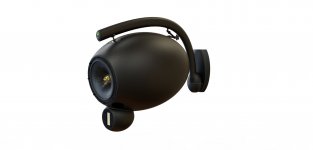 untitled.523.jpg204.7 KB · Views: 104
untitled.523.jpg204.7 KB · Views: 104 -
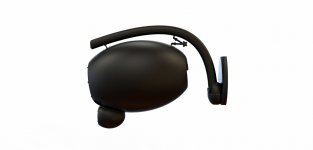 untitled.521.jpg182.6 KB · Views: 101
untitled.521.jpg182.6 KB · Views: 101 -
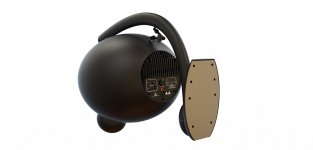 untitled.526.jpg249.8 KB · Views: 97
untitled.526.jpg249.8 KB · Views: 97 -
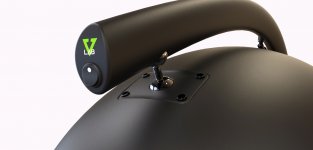 untitled.524.jpg521.7 KB · Views: 97
untitled.524.jpg521.7 KB · Views: 97 -
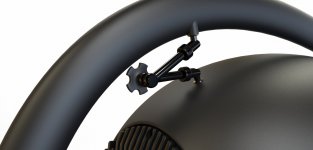 untitled.525.jpg573 KB · Views: 98
untitled.525.jpg573 KB · Views: 98 -
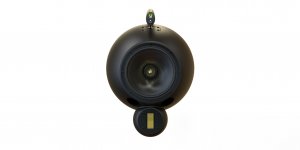 untitled.520.jpg214.9 KB · Views: 43
untitled.520.jpg214.9 KB · Views: 43 -
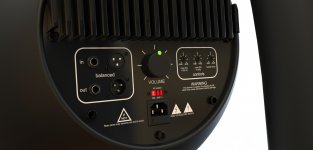 untitled.527.jpg532.1 KB · Views: 51
untitled.527.jpg532.1 KB · Views: 51 -
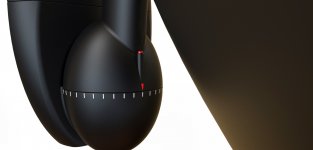 untitled.529.jpg490.2 KB · Views: 59
untitled.529.jpg490.2 KB · Views: 59
That looks like a lot of effort and they look nice but if I may... how would a studio use a monitor mounted like that?Studio monitors...
- Status
- This old topic is closed. If you want to reopen this topic, contact a moderator using the "Report Post" button.
- Home
- Loudspeakers
- Multi-Way
- New guy here... and a new idea.
